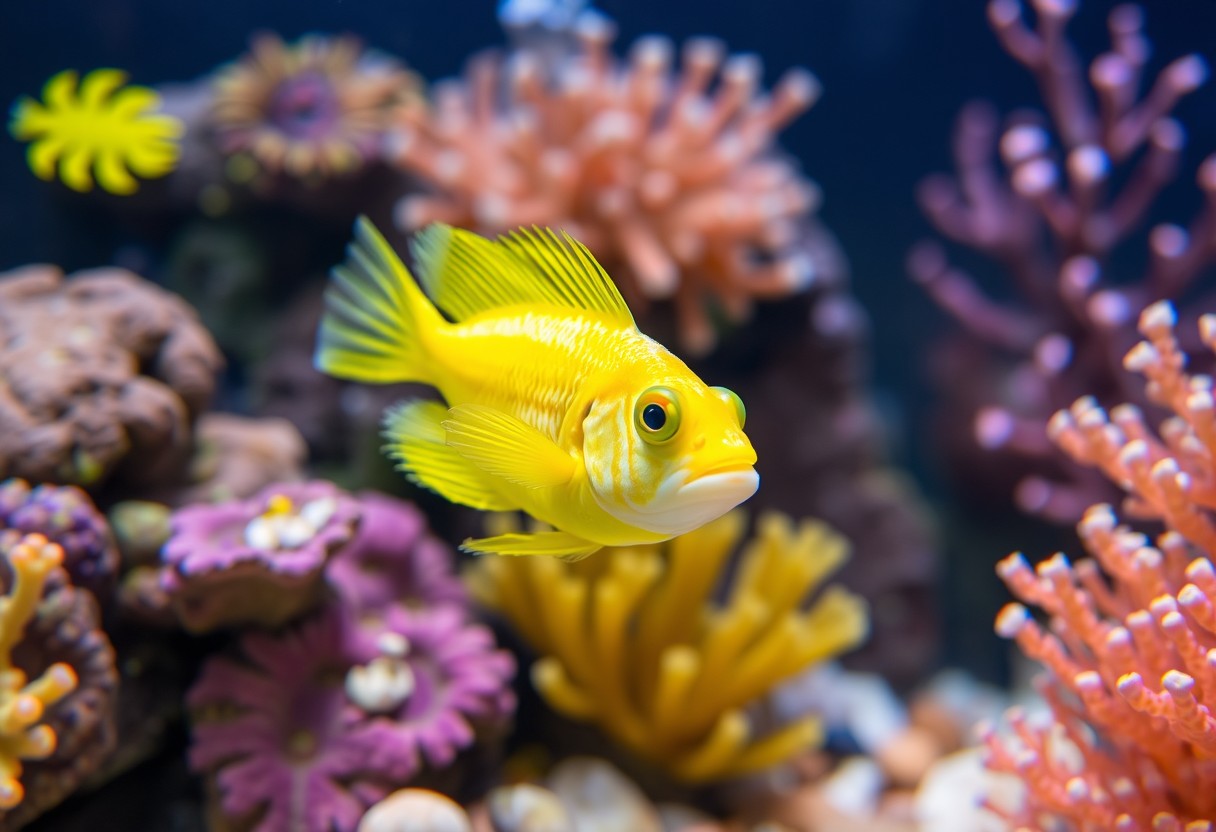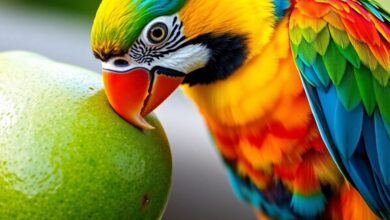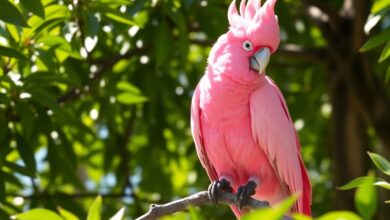
You will discover everything you need to know about Canary Blenny care, from their captivating behavior to their specific dietary needs and optimal tank setup. Understanding these vibrant fish will help you create a thriving aquatic environment that showcases their unique personalities. Ensuring that your tank is appropriately designed and that you provide a nutritious diet is vital for the health and happiness of your blenny. Dive into this guide to enhance your knowledge and ensure your Canary Blenny thrives in your aquarium.
Key Takeaways:
- Behavior: Canary Blennies are known for their curious and playful nature, often interacting with their environment and other tank mates.
- Diet: They thrive on a varied diet consisting of algae, high-quality flake food, and frozen offerings to ensure optimal health.
- Tank Setup: A well-planned aquascape with plenty of rocks and hiding places is necessary for their comfort and to replicate their natural habitat.
Understanding Canary Blennies
Your journey into the world of Canary Blennies will reveal their vibrant colors and captivating behaviors. These small, reef-dwelling fish are not just visually appealing; they also have unique personalities that can enrich your aquarium experience. As a community-oriented species, Canary Blennies thrive in well-maintained tanks and can coexist peacefully with various fish. However, understanding their natural behaviors and needs will help you provide the best care possible, ensuring a happy and healthy addition to your aquatic environment.
Origin and Habitat
Above all, Canary Blennies are native to the rocky reefs of the Pacific Ocean, particularly around Hawaii and the Marshall Islands. They are usually found in shallow waters, where they inhabit crevices and holes in the rock formations. This natural habitat provides necessary shelter from predators and creates a diverse environment for foraging, making it significant to replicate similar conditions in your aquarium setup.
Physical Characteristics
Any aquarium enthusiast will appreciate the striking appearance of the Canary Blenny. These fish are characterized by their elongated bodies and vibrant yellow to orange coloration with subtle patterns. They typically grow to about 4 to 5 inches in length and possess large, expressive eyes. Their unique dorsal fin adds to their charm, as it extends the entire length of their body, enhancing their ability to glide effortlessly through the water.
Further exploring their physical characteristics, you will notice that Canary Blennies have a unique body shape that aids in their agility and maneuverability within tight spaces. Their bright coloration serves not only as a visual allure but also acts as a form of communication among individuals. The extended dorsal fin allows for enhanced stability and swimming prowess, while their large eyes provide excellent vision for spotting potential threats or food. Together, these features make them both fascinating and charming inhabitants of your aquarium.

Behavior and Social Needs
Some aspects of the Canary Blenny’s behavior and social needs are important for your understanding of their care. These blennies are known for their curious and active nature, often displaying lively interactions within their environment. They are generally peaceful, but providing them with suitable companions will help promote a harmonious aquarium atmosphere.
Interactions with Other Fish
With a calm disposition, the Canary Blenny can coexist with a variety of tank mates, such as small, non-aggressive species. However, avoid pairing them with overly aggressive fish, as this can lead to stress and potential harm.
Territoriality and Hiding Spots
For the Canary Blenny, establishing a territory is vital. They prefer to have plenty of hiding spots, such as caves, rocks, and corals, to feel secure. This will help reduce stress and allow them to exhibit their natural behaviors.
It is important to provide adequate hiding spots and territory for your Canary Blenny to thrive. These blennies can become territorial and may display aggression towards similar species, particularly other blennies. Ensure your aquarium is designed with multiple hiding places and structure to minimize conflicts and allow your blenny to feel safe. Using caves or overhangs not only provides security but also encourages your fish to explore their environment, promoting healthier behavior and reducing stress levels.
Diet and Feeding Habits
Unlike many other saltwater fish, the Canary Blenny is primarily a herbivore. It thrives on a diet consisting of algae and plant matter, so providing a balanced and varied diet is important for its optimal health and vibrant coloration. Incorporating a mixture of both dry and frozen foods will help replicate its natural feeding habits and ensure that it receives all necessary nutrients.
Natural Diet in the Wild
Between the dense underwater structures and rich algae beds of its natural habitat, the Canary Blenny predominantly feeds on algae and detritus. This diet not only provides important nutrients but also supports their natural behaviors, including grazing throughout the daylight hours.
Recommended Food Sources for Aquariums
Recommended food sources for your Canary Blenny include high-quality flake or pellet food, as well as frozen or dried seaweed. Supplementing these with occasional offerings of spirulina or other nutrient-rich algae will further enhance your fish’s diet. It’s best to provide food in small amounts, allowing your blenny to graze freely and avoiding overfeeding.
Habits suggest that a balanced diet contributes significantly to the health and well-being of your Canary Blenny. Including a variety of high-quality marine algae or specific herbivore formulas will promote its natural grazing behavior. Providing a mix of dry and frozen foods helps avoid deficiencies, while ensuring that your blenny maintains its vibrant colors and robust health. Note that overfeeding can lead to water quality issues, so it’s important to monitor feeding habits closely.

Tank Setup Essentials
After setting the right environment for your Canary Blenny, ensure you familiarize yourself with their specific needs. For tips on Canary Blenny feeding? – Reef2Reef, you can find valuable insights from experienced aquarists dedicated to this species.
Ideal Tank Size and Environment
Beside ensuring proper water parameters, your tank should be at least 30 gallons to give your Canary Blenny enough space to thrive. A larger aquarium with plenty of swimming room and hiding spots will not only reduce stress but also enhance their natural behavior.
Substrate and Decor Considerations
Substrate plays an important role in your tank setup as it affects the overall aesthetic and functionality. Aim for a fine sand substrate or small pebbles that mimic their natural habitat, allowing the blenny to dig and forage. Adding live rock and various decorative items encourages exploration while providing shelter from other tank mates. Ensure that the decor is stable and won’t collapse, as it could pose risks to your fish.
Understanding the balance between aesthetics and functionality in your tank is key. Use rock formations and caves to create interesting layers, which promote territorial behavior while offering safe zones. It’s important to keep decorations safe and fish-friendly, as sharp edges may harm your blenny. A carefully considered setup will not only highlight your aquatic display but also contribute to your Canary Blenny’s well-being.
Water Parameters and Maintenance
Once again, maintaining suitable Canary Blenny water parameters is vital for their well-being. Aim for stable water conditions to promote your fish’s health and activity. Regular testing of salinity, pH, ammonia, nitrites, and nitrates will ensure a balanced environment. Ideally, perform water changes regularly to keep harmful substances in check and foster a thriving aquatic habitat.
Ideal Water Conditions
Any fluctuations in water conditions can stress your Canary Blenny. Maintain a salinity range of 1.020 to 1.025, a pH level between 8.1 and 8.4, and keep temperatures stable at 75°F to 82°F. Monitoring ammonia and nitrite levels should reveal readings of 0, while nitrates should remain below 20 ppm. Establishing these ideal conditions is key to their long-term health.
Routine Care and Maintenance
The routine care and maintenance of your aquarium are vital to provide a healthy habitat for the Canary Blenny. Regularly check your water parameters, perform partial water changes, and clean any algae growth. Additionally, watch for any signs of disease or stress in your fish, which can include changes in behavior or appearance.
In addition, consider setting up a reliable filtration system to manage waste and ensure clean water, as poor water quality can lead to stress and health issues. Frequent monitoring and adjustment of the feeding schedule will help maintain optimal conditions. By maintaining the right environment, you encourage a vibrant community in your aquarium, supporting the health and lively behavior of your Canary Blenny.

Common Health Issues
Many health issues can affect your ORA Canary Blenny. These include parasitic infections, fin rot, and ich. Regular monitoring and a proper diet can mitigate risks. For a healthy start, consider getting your fish from reputable sources like the ORA Canary Blenny | Captive-Bred ….
Signs of Illness
Behind closed fins and dull colors, your blenny may exhibit more subtle signs of health issues. Look for changes in behavior like hiding, loss of appetite, or abnormal swimming patterns, as these can indicate underlying problems that require attention.
Prevention and Treatment
Around your tank, routine maintenance and monitoring water quality are imperative to prevent health issues. Keeping an eye on temperature, salinity, and ammonia levels can help maintain a stable environment.
Also, provide your blenny with a varied diet rich in vitamins and nutrients to boost its health and immunity. Quarantine new additions to your aquarium to prevent introducing diseases. In case of an outbreak, treat with appropriate medications and ensure your tank is free from stressors such as overcrowding, fluctuating temperatures, and poor water quality, as these factors significantly impact your fish’s well-being.
Summing up
Summing up, caring for your Canary Blenny involves understanding its unique behavior, dietary needs, and appropriate tank setup. You should provide a well-planted aquarium with plenty of hiding spots to help your blenny feel secure. A diverse diet featuring high-quality pellets, vegetable matter, and occasional live foods will ensure your fish thrives. By maintaining optimal water conditions and ensuring compatibility with tank mates, you can enjoy a vibrant and lively addition to your aquatic environment.
Q: What is the ideal tank setup for keeping Canary Blennies?
A: Canary Blennies thrive in a well-structured tank that mimics their natural habitat. A minimum tank size of 30 gallons is recommended to provide ample swimming space and territory. The tank should include live rock or hiding spaces to create secure areas where they can retreat. Additionally, it is beneficial to have sandy substrate, as they tend to forage and dig. Ensure that the water parameters are stable, with a salinity of 1.020 to 1.025, a temperature range of 75 to 82°F, and pH levels between 8.1 to 8.4. Proper filtration and regular maintenance are important for maintaining water quality.
Q: What type of diet should be provided for Canary Blennies?
A: Canary Blennies are primarily herbivorous and require a varied diet to thrive. A balanced diet should include high-quality algae-based foods, such as flakes or pellets specifically formulated for herbivorous fish. Fresh or frozen foods like spirulina, nori, and brine shrimp can also be offered to provide additional nutrients. It’s suggested to feed them small portions multiple times a day to mimic their natural grazing behavior in the wild. Ensuring a varied diet will promote their health, vibrant coloration, and overall well-being.
Q: How do Canary Blennies behave in a community tank?
A: Canary Blennies are generally peaceful and can be kept in a community tank with compatible species. They tend to be more territorial than aggressive, so providing plenty of hiding spots and visual barriers can help reduce stress. It’s advisable to avoid keeping them with overly aggressive fish or species that may compete for the same food sources. Typically, they exhibit curious behaviors, often perching on rocks while observing their surroundings. It’s important to monitor their interactions with other tank mates to ensure a harmonious environment.




